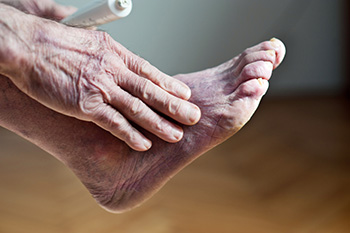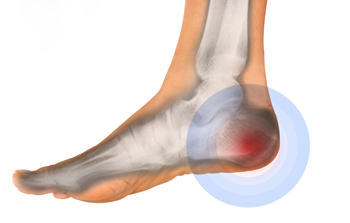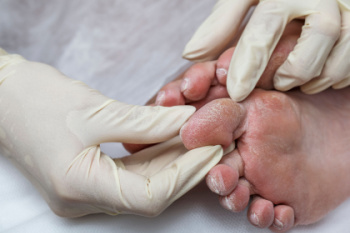
As people age, changes in the blood vessels can limit circulation to the feet. This reduced blood flow means less oxygen and fewer nutrients reach the tissues, slowing the body’s ability to heal from cuts, sores, or infections. Skin on the feet may become thinner, drier, and more prone to injury. Seniors with poor circulation often feel persistent coldness or numbness, which can mask developing problems. Muscles in the lower legs and feet may weaken over time, affecting balance and stability. In severe cases, prolonged lack of blood supply can lead to tissue damage that requires urgent medical attention. Because the signs may be subtle at first, regular evaluation is important to detect issues early. If you are an older adult experiencing ongoing coldness, color changes, or delayed healing in the feet, it is suggested that you see a podiatrist for assessment and management.
While poor circulation itself isn’t a condition; it is a symptom of another underlying health condition you may have. If you have any concerns with poor circulation in your feet contact one of our podiatrists of Foot & Ankle Centers of Charlotte County . Our doctors will treat your foot and ankle needs.
Poor Circulation in the Feet
Peripheral artery disease (PAD) can potentially lead to poor circulation in the lower extremities. PAD is a condition that causes the blood vessels and arteries to narrow. In a linked condition called atherosclerosis, the arteries stiffen up due to a buildup of plaque in the arteries and blood vessels. These two conditions can cause a decrease in the amount of blood that flows to your extremities, therefore resulting in pain.
Symptoms
Some of the most common symptoms of poor circulation are:
- Numbness
- Tingling
- Throbbing or stinging pain in limbs
- Pain
- Muscle Cramps
Treatment for poor circulation often depends on the underlying condition that causes it. Methods for treatment may include insulin for diabetes, special exercise programs, surgery for varicose veins, or compression socks for swollen legs.
As always, see a podiatrist as he or she will assist in finding a regimen that suits you. A podiatrist can also prescribe you any needed medication.
If you have any questions, please feel free to contact our offices located in Punta Gorda and Port Charlotte, FL . We offer the newest diagnostic and treatment technologies for all your foot care needs.




